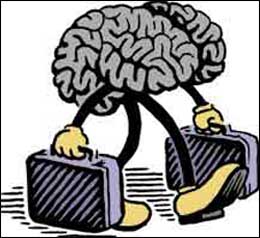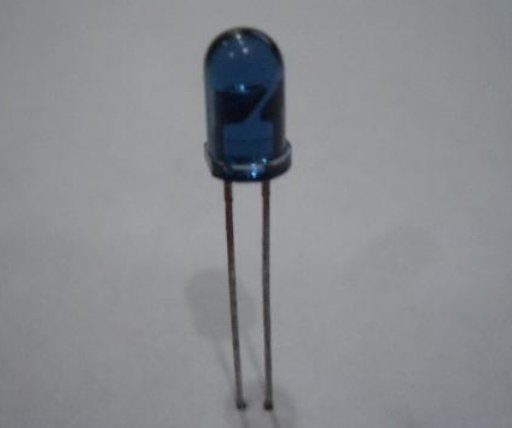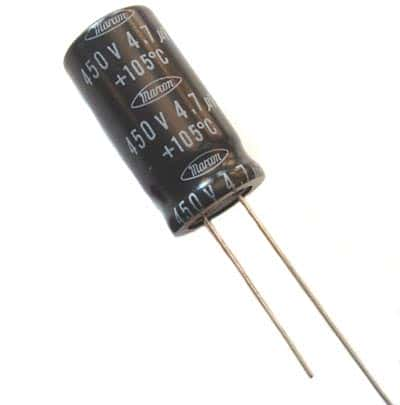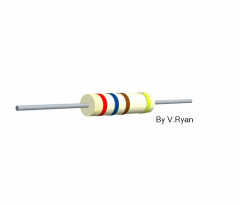 Let us start with a general example:
Let us start with a general example:
Imagine a society where people are being manufactured, trained, fed and brought up hoping that they would serve the society and build the nation. After the training, they chose to build some other nation. This is what's happening in many developing countries.........

1. Is the government mad enough to use the revenue of the people's pay on these stuff? Its just like feeding other countries for free,
2. Is it justified! because you thought you are creating a service minded product, but it turned out to be a business minded one...........
I heard one of my friend saying, "There is nothing an issue like going and working in abroad, because you're showing how capable your country is, in the outer world, how intelligent you are...
Just think for a moment, if we are that efficient, why are we being consistently marked as a developing country? If we are that capable, why are we still lagging in application development?
If we are really that capable, why don't we make ourselves as the number one in IT industry?

If we are that capable, why are our global standards still very low,
=>Can't the government just speak out the problems with products they develop?
=>Can't they ask their products to set up goals to build a strong nation? Instead we boast ourselves that we are accepted by MNC'S that never develops india......

When Nehru initiated the IIT’s in India, his plan was to encourage the best talent in India for the development of India. His dream was half realized. The talent was developed in India but the talent has left to the US, for better salaries and life. Pre-90′s life was a filled with little entrepreneurship and a lot of socialism. This is not what the young and educated wanted. India just could not provide the kind of life Indian educated need. In fact, the IIT graduates were the biggest exports to the US until India’s software exports came along.

- source from web
According to wikipedia, "brain drain", is the large-scale emigration of a large group of individuals with technical skills or knowledge. The reasons usually include two aspects which respectively come from countries and individuals. In terms of countries, the reasons may be social environment (in source countries: lack of opportunities, political instability, economic depression, health risks, etc.; in host countries: rich opportunities, political stability and freedom, developed economy, better living conditions, etc.). In terms of individual reasons, there are family influence (overseas relatives), and personal preference: preference for exploring, ambition for an improved career, etc. Although the term originally referred to technology workers leaving a nation, the meaning has broadened into: "the departure of educated or professional people from one country, economic sector, or field for another, usually for better pay or living conditions".[1]Brain drain is usually regarded as an economic cost, since emigrants usually take with them the fraction of value of their training sponsored by the government or other organizations. It is a parallel of capital flight, which refers to the same movement of financial capital. Brain drain is often associated with de-skilling of emigrants in their country of destination, while their country of emigration experiences the draining of skilled individuals.

What is good in brain drain?
The answer just simple,there's nothing helpful for Indian government,i think are virtually plotted as
simple fools,who spend huge amount of money what you called prestigious institutes,they run
away with huge tag line to work for brand companies which pay huge revenues U.S.A.
The good is only happening personally,they look for better pay,good comfort,showing the
greatness that they work for THE BRAND U.S.A.,,.Its not greatness actually what we call in hindi
just like a 'DOKHA' to Indian government.
They might be expanding the Indian community through out the world but 'whats up man!'.
RECESSION CHANGING TREND!
BRAIN DRAIN been one of the prime reasons why India has not been able to establish
itself as an R&D hub. We pat our back on being the Outsourcing giants and expanding
India’s global footprint. However, ever since 26/11 happened and later with the U.S.
economy recession
A new trend was cited to be emerging-Reverse Brain Drain.
However, in the last 3-4 years there have been signs of reverse brain drain happening even though
i have questioned whether the reverse brain drain is real primarily because the education and
research infrastructure in the country has not improved drastically.
But the times, they are changing! More and more folks are looking forward to come back to the
roots and put their talent to use right here in India and hopefully in some cases for India.
There has been a double digit increase in Indian origin and NRI senior executives shifting base to India.
There has been an up to 20% increase in the number of CEO movements compared with last year,

as persons of Indian origin and non-resident Indians return home
Major executive recruitment firms are reporting a constantly increasing number of senior
executives in the US, Europe considering a move to India for good. A look into the economic
environment is enough to suggest that this trend of senior executives relocating is not entirely
driven by the desire to return to homeland and participate in the betterment of the country a.k.a
Global economic environment is the biggest driver for reverse brain drain. Even as countries like
US and Europe battle with debt crisis and high unemployment, India has grown very well in the past
few years and despite inflationary pressures, it is expected to outpace the growth in the developed countries.
Additionally, there has been major improvements in the education infrastructure in the country.
Major foreign universities have shown interest in setting campuses in India and even though the
pace might be slow, there is a window of opportunity for talent students to chase their dream right here in India.
Sectoral demand is another driver for increasing reverse brain drain. Industry sectors like Pharma
need senior management level folks with global experience and understanding of the nitty-gritties
of navigating the global markets. This has created opportunities for senior executives working in
the US or Europe to consider relocating to India to take on new challenges while at the same
maintaining the fat pay packets they are used to.
Lets hope the same thing continues show how strong is India is by relocating all our efficient resources and proving them the required platform to establish braing an econmic turnaround here.
38% of US docs, 36% of NASA scientists are Indians
 '
'

Shyam Bhaskaran, scientist attached to National Aeronautics and Space Administration (NASA).
Indian scientist studying nature of Martian rocks
If you thought that Global Indian Takeover was just a hollow cliche leaning on a few iconic successes like Pepsi's Indra Nooyi, Citibank's Vikram Pandit and steelworld's Lakshmi Mittal, there is a slew of statistics now to give it solid ballast.
The extent to which desis have made an impact in the US was reeled off in the Rajya Sabha, as many as 12% scientists and 38% doctors in the US are Indians, and in Nasa, 36% or almost 4 out of 10 scientists are Indians.

 Indian
Indian 

























